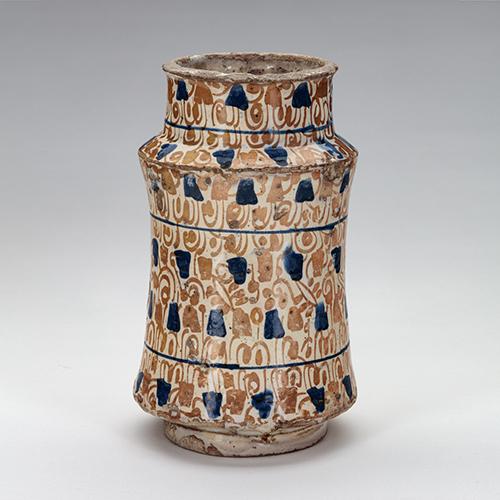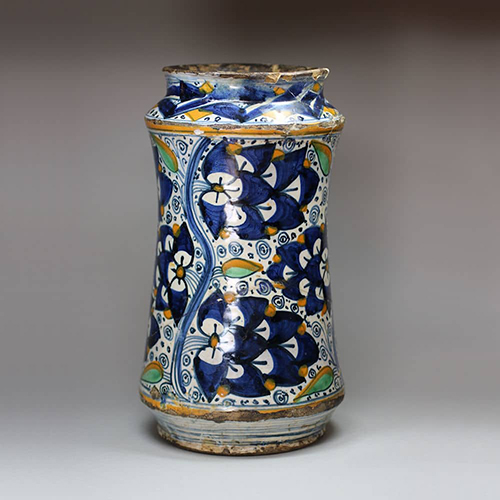

The term albarello is used to describe a specific style of tin glazed earthenware, or Maiolica, that originated in the Middle East. Examples first arrived in Europe as a result of the 8th century Muslim conquest of the Iberian Peninsula, (modern day Spain and Portugal).
They were traditionally used as apothecary jars, being a receptacle for ointments or dry goods. Finer examples could be seen in wealthy homes and were considered a symbol of ones exalted status. As Albarello were essentially used for storage, their basic design is practical and simple with a cylindrical form and slightly tapered waist, which made them easier to carry and secure on a shelf.
It is thought that the name albarello derives from the Latin word ‘albaris’, meaning ‘white’, and there are two common explanations for the terminology. Firstly, the jars were often sealed with a lid of white parchment on which the apothecary could make a note of its contents. The second theory is that the name refers to the white ground which was the base of most jars’ decoration.
 Both suggestions have their flaws in that the jars originated in China and were originally fashioned from bamboo so ‘white’ would be an illogical description for the medium. Alternatively, jars were often sealed with leather and cord, so the parchment theory is equally questionable.
Both suggestions have their flaws in that the jars originated in China and were originally fashioned from bamboo so ‘white’ would be an illogical description for the medium. Alternatively, jars were often sealed with leather and cord, so the parchment theory is equally questionable.
First brought to Italy by Hispano-Moresque traders, entrepreneurial potters began making their own albarello in Florence in the early 15th century. Italy’s renaissance artisans elevated the humble apothecary jar to new heights of creativity, applying ornate designs, historical scenes, and portraits. Regional variations were so diverse that we now identify pieces from Venice, Palermo, and Florence by their own distinctive designs.
Click here to view a selection of albarelli currently available from BADA members.

